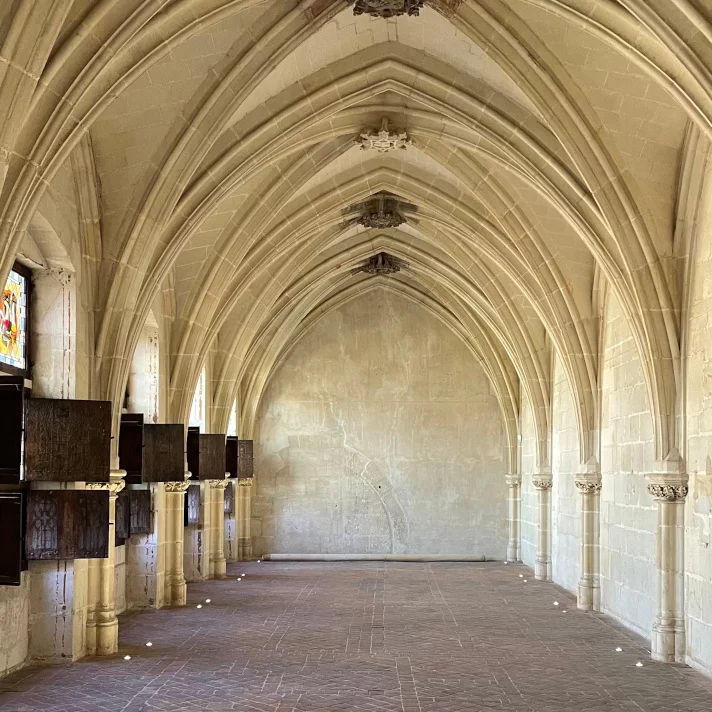History
article | Reading time5 min
History
article | Reading time5 min
Let yourself be seduced by the cloître de la Psalette, nestled in the shelter of the foothills of Saint-Gatien's Cathedral in Tours, former capital of the kings of France.
A little etymology: do you know the origin of the word "psalette"? In the Middle Ages and Renaissance, the Psalette was a vocal music school attached to a church, where young boys received a high-level musical and religious education.
Going back a little further, in Latin etymology, the word psallere means "to sing psalms", while in Greek, psallô means"to vibrate the strings of an instrument" and gives its name to the psaltery, a stringed musical instrument that appeared in the Middle Ages.
Baptiste Bruzel
From the High Middle Ages (5th - 10th century), the cloister was the workplace of the canons of Saint-Gatien Cathedral. At the end of the medieval period, the chapel, also known as the canons' assembly, was a hub of cultural activity, thanks to its scriptorium, a workshop for copying manuscripts, and its library, one of the richest in France at the time.
The library was modified and enlarged in the 16th century by Canon Raoul Le Ségaler, driven by the desire to create a great humanist library modelled on that of Sélestat in Alsace.
The buildings we can see today were built from the 15th century onwards, thanks to the patronage of Bishop Jean de Bernard, and completed in the 16th century.
In 1793, during the French Revolution, the chapel was dissolved and the library dispersed. Then, in 1802, the cloister lost its chapter house, due to a street-cutting project.
Baptiste Bruzel
Three galleries remain today. At the corner of the north and east galleries, a magnificent spiral staircase leads to the upper floor. Large windows open onto the outside. Inside, a core leads the eye to the top of the spiral staircase, which ends in a coffered ceiling. .
Patrick Müller - Centre des monuments nationaux
Located on the second floor of the monument, the cloister terrace offers a unique panoramic view of the cloister and its garden, as well as the cathedral.
No less than four centuries of architecture are on display, from the 13th century chevet to the two towers built around 1547, and the 14th century transept rose.
Patrick Müller - Centre des monuments nationaux
The library is the largest room in the building open to visitors. This room was used to store books from the chapel's library, some of which are now held by the Tours municipal library.
It comprises seven bays with vaults decorated with keystones vault. The windows overlooking the garden all feature contemporary stained glass by Max Ingrand dating from the 1960s.
Baptiste Bruzel




